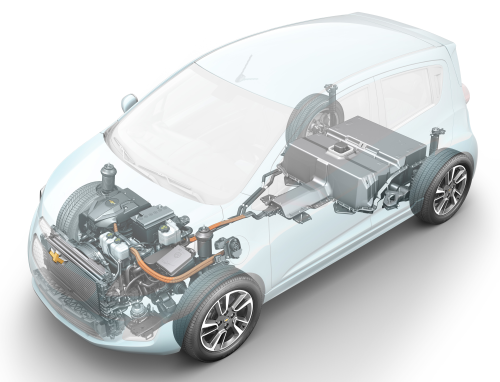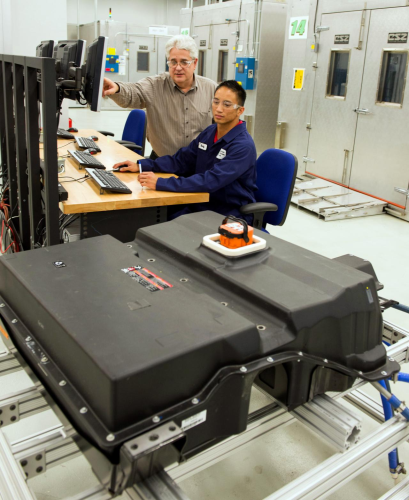

General Motors (GM) worked with Continental Structural Plastics (CSP) as the need for a composite electrical vehicle battery enclosure was identified to meet a number of rigorous performance requirements. These included 30° offset-barrier, side-impact, and rear-barrier crash; 50 G impulse shock (X, Y, Z); post-crash package integrity; fire-resistance testing; 3m drop testing (bottom/end); 1m water-submersion test; and vibration/shock testing.
To satisfy all criteria, new material, production process, post-mould finishing, and non-destructive test methods were needed.
CSP therefore turned to Cytec Industrial Materials (Cytec) for a materials solution as well as engineering support. Cytec studied CSP requirements and developed MTM® 23, a tailored, self-releasing rapid-cure vinyl ester resin system. Cytec and CSP also worked together on data generation, ply design and press production technology. That close collaboration enabled CSP to manufacture parts in less than 10 minutes at a 150° cure, but MTM® 23 has the capability to be rapid-cured in less than 3 minutes.
Cytec adds that the result is the industry's first application of a volatile-organic compound (VOC)-free thermoset vinyl ester resin woven glass reinforced prepreg. This new material enabled CSP to form a complex-shaped enclosure that protects the EV's battery components in the event of a catastrophic event. The tough compression-moulded composite is 40% lighter than metallic solutions, helping the vehicle achieve extended range and enhanced performance.
Since it is non-conductive, it protects occupants and first responders to an accident scene. The specially formulated resin is free of styrene emissions, making it safer for workers and the environment. Selective pattern layups allow for localised reinforcement. The application also features a large structural joint of composite to steel.




